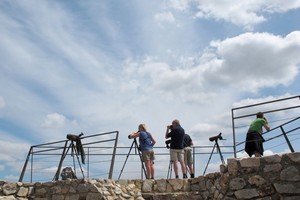Nature
& Terroir
Depuis 36 ans, Nature & Terroir vous propose des voyages naturalistes organisés en Europe, mais aussi dans des parties du monde plus éloignées, voire très éloignées. Forts de cette expérience, nous vous invitons, grâce à un panel de guides passionnés et passionnants, à (re)découvrir le monde du vivant sous ses formes les plus captivantes (oiseaux, grands mammifères, plantes, paysages, …), sans négliger les aspects humains et culturels des contrées visitées.
Nous développons pour vous, dès la saison prochaines, de nouveaux voyages plus proches sans avion mais aussi des voyages ouverts aux familles avec enfants programmés durant les vacances scolaires.
Nos 3 concepts voyages

Voyages nature organisés
Chaque année, nous vous proposons quelque 60 voyages organisés sur un ou plusieurs thèmes nature. Laissez-vous guider, et vous aurez les meilleures occasions d’en observer et d’en découvrir les plus exceptionnels attraits.
Découvrir
Voyages à dates multiples
Certaines destinations méritent d’être visitées à des périodes particulières (migration, reproduction, floraison, …). C’est ce que nous vous proposons au travers de quelques voyages à dates spécialement choisies à cet effet.
Découvrir
Voyages à la carte
En choisissant la période que vous souhaitez, optez pour l’un de nos voyages « à la carte » et partez à la découverte d’espèces emblématiques, de paysages étourdissants et/ou de phénomènes naturels hors du commun. Sensations fortes assurées !
Découvrir


